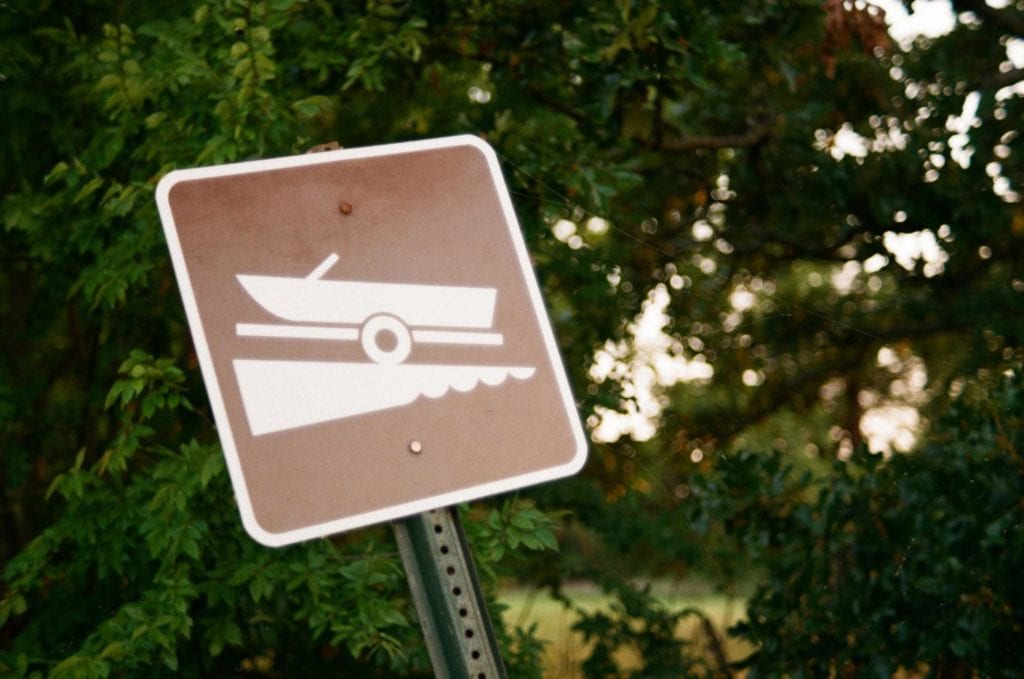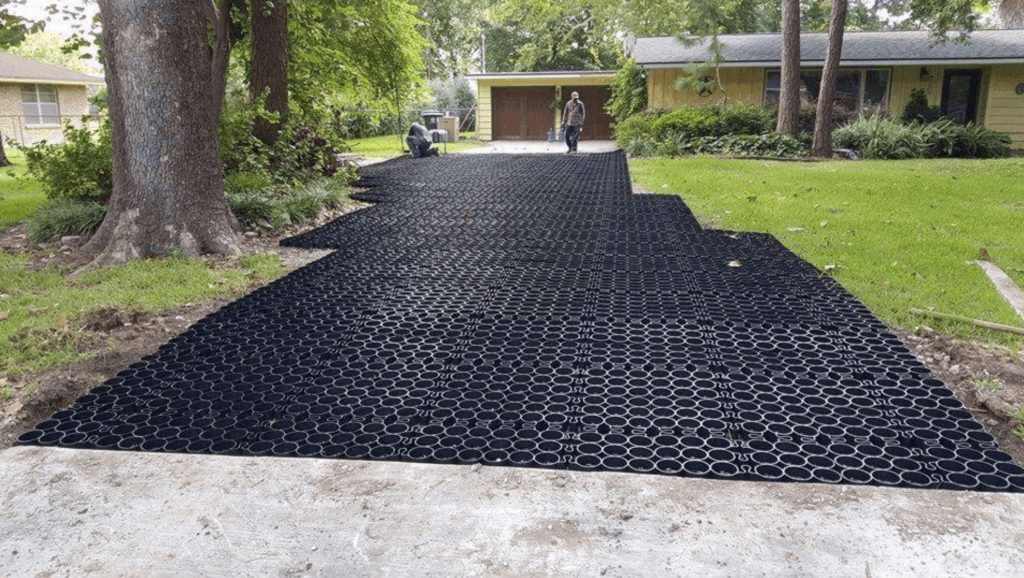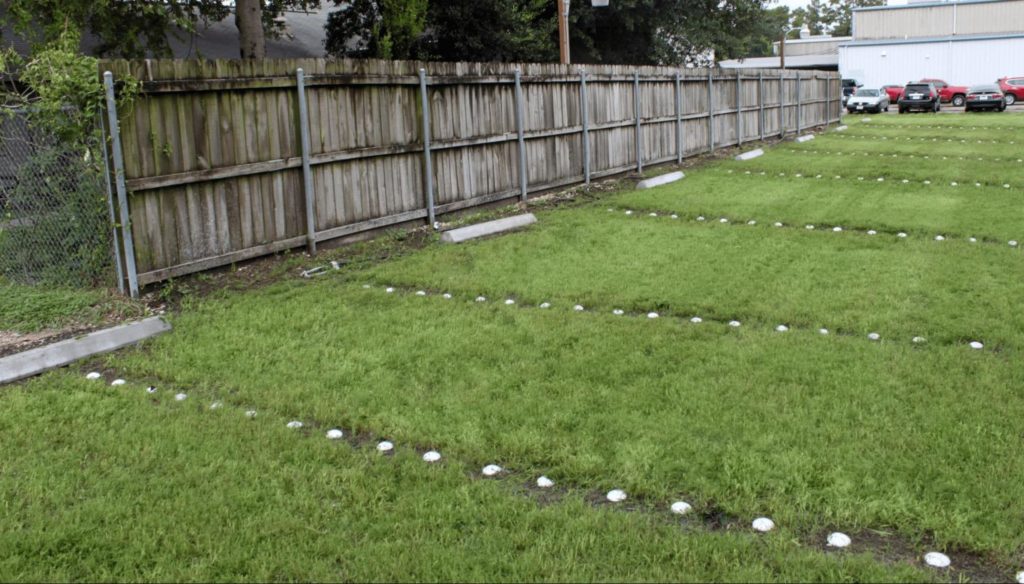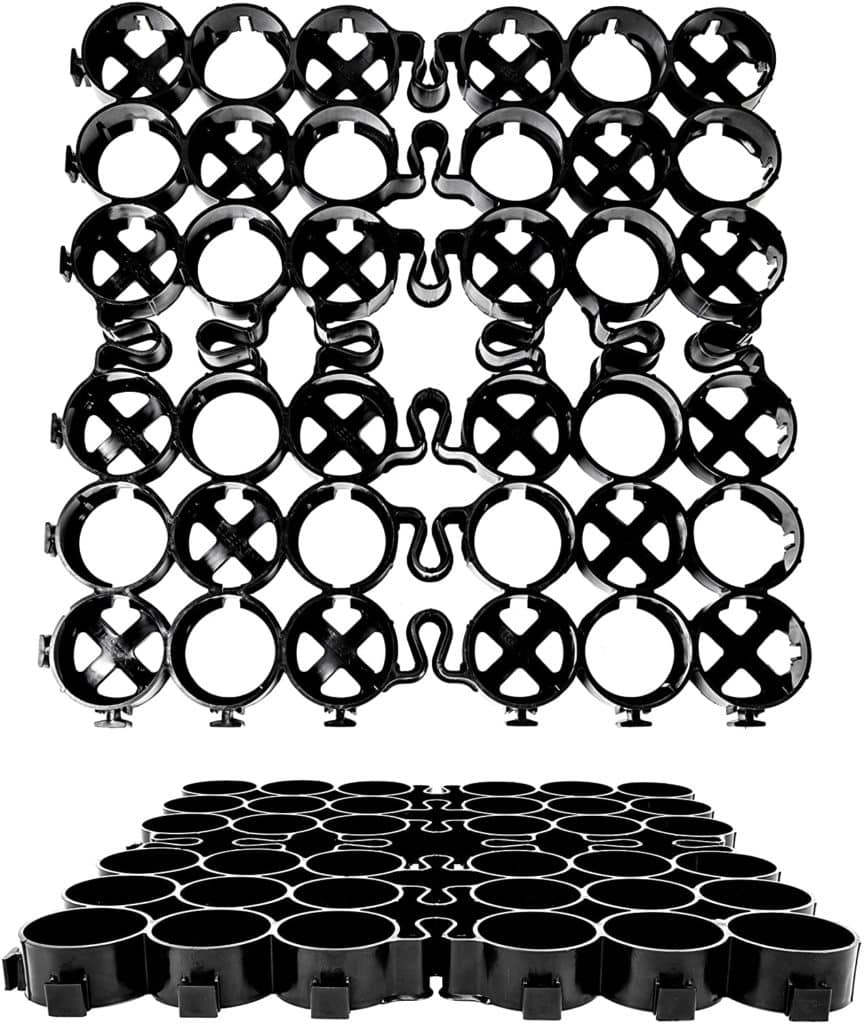How to Design a Safe and Reliable Boat Ramp
A safe and reliable boat ramp can have a significant impact on the longevity of your boat. It can also prevent you from having to spend money on regular maintenance and will help preserve your shoreline while also preventing you from tracking mud into your boat or other vehicles.
That said, designing a boat ramp isn’t as simple or easy as it sounds. So, if you’re in the market for a new boat ramp, there are a few things you need to consider, including location, materials, ramp size, and dimensions.
Here’s everything you need to know about designing a boat ramp.
Choosing a Ramp Site

The site you choose for your boat ramp design can determine how much construction effort will need to go into building the ramp. For instance, you’ll want to select a location that’s as close to nearby roads as possible to minimize the amount of construction necessary. If you have to build a road leading to the boat ramp, that may require a lot of time and money.
The average water conditions should be favorable, as well. A location with too much wind, violent waves, and other ramps nearby can pose a considerable safety risk. If you’re building with concrete, the ground should already be level so that less digging and filling will be required.
Choosing Your Ramp Size
The two main factors to consider when designing your boat ramp are slope and depth. The slope should be sharp enough to lower boats into the water without the boat trailer touching the water. However, the slope should not be so sharp that the towing vehicle is in danger of accidentally slipping into the water. A 12% to 15% slope is a good guideline to follow.
Alignment and width are two more essential dimensions when planning a boat ramp design. The width of your boat ramp should be wide enough that a boat trailer and a vehicle can fit on it at the same time. There should also be a few extra feet of space on each side for maximum maneuverability.
When designing a boat ramp for rivers, proper alignment is crucial, too. Your goal should be to create a ramp that points downstream, so boats don’t have to launch against the current, which is dangerous and potentially unsafe.
Boat Ramp Material
When designing a safe and reliable boat ramp, there are several material options available. Understanding the advantages and disadvantages of each type of material can help you make the best decision and select the material that will meet your boat ramp needs.
Concrete
Many boat ramps are made from concrete using a special type of shoreline concrete. Regular concrete isn’t suitable for constant exposure to water. Also, it’s important to know that concrete boat ramps must be regularly resealed to avoid water intrusion. Concrete boat ramps are generally impermeable and can pose problems when it comes to mud, traction, and high tides.
Wood
Wood is one of the most common materials used for boat ramp construction. As an organic material, it’s relatively inexpensive and easy to work with, making it ideal for DIY projects. However, wood is vulnerable to rot, warping, and decay and requires regular maintenance to ensure longevity.
Steel
Steel is another viable option for boat ramp construction. It is resilient and abrasion-resistant, but it can be more challenging to install than wood or concrete. Additionally, steel must be galvanized or have other rust protection treatments to prevent corrosion.
Gravel
Gravel is another commonly used material for boat ramps. It is less expensive than wired mesh and other more complex materials and is relatively easy to install. On the downside, gravel can move and shift, which creates an unstable surface on which to launch a boat.
Aluminum
Aluminum is becoming increasingly popular for boat ramp construction due to its superior strength and durability. Aluminum is lightweight, highly resistant to corrosion, and easier to work with than steel. The cost of aluminum, however, is often considered one of the significant drawbacks.
Creating a Boat Ramp Parking Lot

There’s little point in keeping your boat parked on the ramp if you don’t have to. In fact, creating a place to park your boat when you aren’t going out on the water is an excellent way to keep your boat ramp area clean and clutter-free. It will also help the ramp drain better and reduce daily wear and tear.
Unlike boat ramps, when it comes to boat ramp parking lots, there’s one clear material option you should consider – TRUEGRID Permeable Pavers.
TRUEGRID Permeable Pavers
TRUEGRID Permeable Pavers allow for better drainage than traditional asphalt or concrete. Our patented design is 100%-permeable, and allows water to pass through more easily, which makes the draining process super simple. Water permeability also provides more stability to the parking lot’s surface, which can be especially important for boats and other heavy-duty vehicles.
Another benefit of using TRUEGRID Permeable Pavers is that they are made from recycled materials, which makes them a more sustainable paving option. This is important to consider when creating a boat ramp parking lot, as it is a project that will be used by many people and could potentially have an environmental impact.
Plus, TRUEGRID Permeable Pavers are easy to install and maintain. They’re engineered to last for over 20 years with almost no upkeep or maintenance required. A parking lot made from permeable pavers also serves as an excellent place to store heavy vehicles and boats. So, if you own more than one boat or other heavy-duty vehicles, you’ll reap a ton of benefits from a permeable paver parking lot.
If you’re looking for reliable and safe materials for a boat ramp parking lot, TRUEGRID PRO PLUS and TRUEGRID PRO LITE are optimal options.
Transform Your Boat Ramp and Parking Lot with TRUEGRID
Creating a boat ramp isn’t as simple as you might have initially imagined, but it’s completely doable with the right materials and planning. To create the most optimized boat ramp, you will need to consider creating a boat ramp parking lot, as well.
TRUEGRID permeable pavers are the safe, reliable, and eco-friendly material option to complete your boat ramp transformation.
Contact our pavement specialists today to learn more!
Asphalt driveways are the most common type of driveway. While many materials can be used to create a driveway, asphalt has long been favored for a variety of reasons.
When building an asphalt driveway, however, it’s important to take into account the depth of the driveway.

Some asphalt driveways need to be thicker than others depending on how they will be used and what kind of soil they’re being built on.
If you’re looking to build an asphalt driveway, let’s take a look at what goes into determining how deep it should be, as well as a thinner alternative you might prefer.
Determining the Ideal Thickness of an Asphalt Driveway
There are a handful of factors that go into deciding how thick an asphalt driveway should be. For the standard residential driveway built on sandy, gravelly, or rocky soil, 2-3 inches of thickness is required.
Having a 2-inch thick asphalt driveway is suitable for many people, but 3 inches will provide extra durability. If you plan on driving or parking heavier vehicles, 3 inches is the best way to ensure you don’t end up cracking your driveway.
For the subsurface of an asphalt driveway, 6-8 inches of granular base aggregate is required. This is so you can have a durable and level surface to pour the asphalt over, since regular soil is prone to shifting and washing out.

When it comes to the soil beneath the aggregate, you may need to excavate it even further if it’s of a certain composition. For instance, clay or loamy soil provides inadequate drainage and would need to be replaced.
How thick should driveway asphalt be for commercial usage? The answer is no less than 3 inches. 3 inches is the standard asphalt thickness for commercial purposes and provides enough durability to handle the weight, pressure, and traffic that commercial driveways are typically subjected to.
When it comes to the granular base aggregate for commercial asphalt driveways, you need no less than 8 inches below the asphalt. Commercial parking lots, however, can settle on 6 inches of granular base aggregate. You also need soil with good drainage below the aggregate, and clay or loamy soil will not suffice.
How thick should an asphalt driveway be for heavy-duty commercial purposes? The answer is 4 to 7 inches. This includes binder and finish levels as well, which are needed for especially heavy-duty purposes.
Driveways near loading docks and driveways that consistently handle big trucks are examples that would need this level of thickness. In general, 6 inches of asphalt over at least 3 inches of aggregate base is what’s required for heavy-duty commercial driveways.
The Consequences of Having an Asphalt Driveway That Isn’t Thick Enough
The reason that the thickness of asphalt driveway is so important is because not having enough thickness can lead to extensive damage down the line.
An asphalt driveway that’s too thin will not distribute weight properly. When this happens, the asphalt is compressed under tires and stretched to the point that it develops fatigue cracks. Once fatigue cracks develop, water can seep in and begin freezing and thawing, which can widen the cracks to the point where the entire surface is compromised.
However, even in areas without a freeze/thaw cycle, the continued pressure of vehicles will widen the fatigue cracks until they also end up causing massive damage that needs to be repaired.
A Thinner Paving Option for Driveways
The best thin alternative to an asphalt driveway is one made from permeable plastic pavers. The total thickness of an asphalt driveway when including the sub-surface can reach upwards of 15 inches.

With permeable plastic pavers made by TRUEGRID, however, you only need 6 – 8 inches of thickness beneath the pavers. The pavers are made from 100% post-consumer recycled high density plastic.
In short, only an excavation of about 128 inches is required to install a permeable plastic paver driveway. TRUEGRID PRO LITE and TRUEGRID PRO PLUS pavers are made from 100%-recycled plastic and will last up to 60 years with minimal maintenance required.
They can withstand the weight of a monster truck driving off a ramp and landing on them without breaking. The pavers on the surface snap together as easily as LEGO blocks and they trap gravel within their empty cells. This creates a level surface with tons of traction that never shifts or breaks down.

TRUEGRID pavers are 100%-permeable and don’t require any additional drainage like asphalt does. Stormwater will flow directly through the pavers and into the soil below, to help prevent erosion and flooding.
TRUEGRID Pavers Are Thinner and More Durable Than Asphalt
If you want a driveway paving solution that looks great, is incredibly eco-friendly, and durable enough to last 60 years before needing replacement, look no further than TRUEGRID permeable pavement.
Contact TRUEGRID today to get in touch with a pavement specialist who can answer your questions!
Parking on grass may be preferable for many reasons. You might not have the time or resources to have pavement installed, you want to choose the most eco-friendly parking option, or you may just prefer the aesthetic.
Whatever the reason you have for using grass as a long-term parking solution, you need a way to sustain your grass so that it doesn’t become a ripped-up mud pit.

When it comes to stabilizing a grassy area for vehicle parking, there are a few options you have to choose from, but using a parking mat for grass is one of the most common.
In case you’re interested in using grass parking mats, let’s take a look at the pros and cons and what might work as a better solution.
Why Use Grass Mats for Parking?
In short, regular grass cannot handle the rigors of having vehicles consistently parked on it. Leaving vehicles parked on regular grass can cause discoloration of the grass and bald spots. Auto fluid leaks can also damage the grass and pollute the soil.
The weight and pressure of the tires can tear up the grass and cause ruts in the soil as well. This not only ruins the appearance of the grass but it can cause cleanliness issues for those who park on it, as well as damage to vehicles and injuries to people.
The Benefits of Grass Mats
Grass mats are typically used to prevent grass from getting torn up. A mat for parking on grass provides a barrier between the grass and the vehicle tires that allows the grass to last longer and provide a more efficient surface for driving and parking.
Grass mats are usually permeable and allow water to drain through them and filter through the soil, back into the water table where it belongs. They are typically cheap and easy to install. Many types of grass mats and mesh allow grass to grow up and through them.
The Downsides of Grass Mats and Mesh
There are a variety of downsides to using a car parking mat for grass to provide vehicle parking. For starters, the mats and/or mesh aren’t as durable as materials like hard plastic pavers. They can be thin, and eventually tear after enough use. They also tend to be vulnerable to pressure from especially heavy vehicles, often sinking into the soil and allowing ruts to slowly develop. In short, they aren’t solid enough.
A mat for grass parking is also typically placed over the top of the grass, and relies on the material that interacts with the grass to provide traction. The mats do not sink into the soil deep enough or may not sink in at all. Despite claims of superior stability and traction, a lack of grip can cause mats and mesh to slip and become displaced over time.
Grass mats and mesh also tend to allow for the buildup of mold and mildew underneath them. This is attributable to both the materials they are made from and the fact that there’s often no penetration of the soil, especially if you opt for a non-permeable type of mat. Permeable varieties are less susceptible to these issues.
A Superior Alternative to Grass Mats
Roll-out pavers like TRUEGRID ROOT and others are the perfect alternative to grass mats. They provide all of the benefits of mats and mesh, without many of the drawbacks. For instance, TRUEGRID ROOT pavers are made from 100%-recycled plastic, which makes them much more eco-friendly than the average grass parking mat.

They’re also a bit sturdier than mesh, which allows them to handle much more weight and pressure over a longer period of time. They are so durable they can last up to 60 years with almost zero maintenance whatsoever.
Unlike mesh, the TRUEGRID paving system will never tear or become displaced. TRUEGRID ROOT is essentially impervious to temperature extremes, UV rays, moisture intrusion, insect damage, and any other natural deteriorating factor you can think of.

It is also equally as easy to install as a grass mat or mesh. You simply lay the robust but flexible pavers out over the intended area and heavy roll over them to press them into the ground. Each section of TRUEGRID ROOT pavers grip into the soil to firmly secure the pavers. TRUEGRID ROOT also has gripping teeth at the surface for improved traction.
This not only prevents slipping, but it also helps to prevent the pavers from sinking into the soil further than intended, as can happen with mats or mesh when confronted with heavy vehicles. Despite being one of the most durable grass paving solutions on the planet, TRUEGRID ROOT pavers can be rendered nearly invisible if you want.
You need only allow your grass to grow up through them to a certain length and you’ll have a sturdy, durable, eco-friendly paving solution that’s as invisible to the naked eye as you need it to be.
TRUEGRID Pavers Are the Best Alternative to Grass Mats, Hands Down
If you need a solid, long-term solution for parking on grass and you don’t want to deal with the many downsides of grass mats and mesh, contact TRUEGRID today to speak with a pavement professional who can get you started.
School bus storage lots are an important but underrated aspect of a school system. Usually, the buses within an individual school system will all park at and be maintained by the same storage/maintenance lot.
One maintenance and storage facility will typically care for buses that service the entire school-aged population, K through 12.

The responsibilities and capabilities of each storage lot can differ, but most storage lots are responsible for a variety of duties relating to the operation and care of school buses. This can include parking, security, maintenance, washing, and any other related tasks.
Guidelines for the Ideal School Bus Storage Lot
The guidelines for designing the optimal school bus storage facility can vary greatly, so let’s take a look at some of the core components of designing a functional and effective facility for school bus storage and/or maintenance:
1. Size
The size of the building should be one of the first considerations. Depending on how many buses you expect to be in and out of the facility on a regular basis, you may need a bigger or smaller facility. Aside from having enough parking space for each bus, you’ll also need to factor in space to maneuver large buses, space for maintenance areas, tool storage, cleaning equipment, and anything else that might take up space in your school bus storage facility.

The dimensions of the building are very important for facilitating free movement in every way required. For instance, we recommend having at least 2 maintenance bays within your facility, each being at least 60 feet long and 16 feet wide. You should have at least 1 bay for every 20-30 buses being serviced unless you have multiple shifts of maintenance employees working around the clock, in which case having a larger ratio of buses to maintenance bays may be acceptable.
The ceiling of any bus storage facility should be at least 18 feet high so that buses can be put on a lift if necessary. It’s also recommended that you have at least 2 lifts in your facility, but more may be required depending on local regulations.
2. Storage
Aside from having enough space to store every bus at the same time, you’ll also need additional storage rooms. Having a room for spare parts is an option, though not required if you already have quick access to parts delivery. You’ll want a dry storage area for things like pipes and tires.
For hazardous and/or flammable materials, a safe, dedicated storage site will be required. It should be built with the requisite safety features like fire doors, a fire extinguisher, etc. You’ll need a drivers lounge for your drivers and this room can be as minimalist as you want or could act as a full-service lounge with many amenities, depending on your budget.
You may want your facility to be surrounded by fencing and accessible only on a limited basis, to prevent security breaches and safety concerns. You’ll also want rooms for supervisors, computer networking, dispatch and clerical, mechanical and electrical equipment, as well as toilet facilities. You should also keep in mind that all of these rooms need to be ADA-compliant.
3. Washing
Washing your buses is necessary and can be done in a handful of ways. You can hire a bus washing service, build an in-house washing bay, use a portable washing system, hand wash, or take your buses through a local car wash now and then. Building an in-house, automatic washing bay seems to be the most cost-effective and will take up at least 1,200 square feet of space. You’ll also need a water recovery system as well as sewer access and a storm discharge.

4. Parking
Buses can be parked indoors or outdoors. If parked indoors, your facility will need to be much larger than if parked outdoors. Indoor parking is often worth it because of the reduction in cold-weather issues and environmental deteriorants. Indoor-parked buses also tend to last longer and look better.
If including a fuel facility, you should take account of ingress and egress as well as security considerations. When planning for bus parking, each parking spot should have 900 square feet of space and be 14 feet wide.
When it comes to paving your parking space area for cars, buses, and all other vehicles, it’s recommended that you opt for concrete instead of asphalt because the auto fluids commonly leaked in a bus parking area will damage asphalt beyond repair. Concrete can be easily cleaned if the situation arises, though it tends to be brittle in cold weather and costly to maintain over a long period of time.
Permeable plastic pavers like the kind made by TRUEGRID, however, are an even better solution. Permeable pavers trap gravel within their empty cells in order to create a durable, low-maintenance, and 100%-permeable surface for parking and driving. Capable of acting as a stand-alone stormwater drainage solution, the pavers can handle the heaviest of rain flows and will filter stormwater through 8 inches or more of subsurface gravel that will also provide subsurface detention volume.

TRUEGRID is the Ultimate Paving Solution for Bus Storage Facilities
Not only do permeable pavers like TRUEGRID PRO LITE and TRUEGRID PRO PLUS provide the perfect low-cost, professional-looking, durable, and permeable paved surface for bus storage garages, they’re also eco-friendly! Made from 100%-recycled plastic, TRUEGRID pavers are one of, if not the most eco-friendly paving solution on the planet, which is a big plus for schools with eco-friendly values.
If you’re paving a bus storage facility and undecided on what type of material to use, look no further than TRUEGRID permeable pavers. Contact TRUEGRID today to get in touch with a pavement professional who can point you in the right direction.

